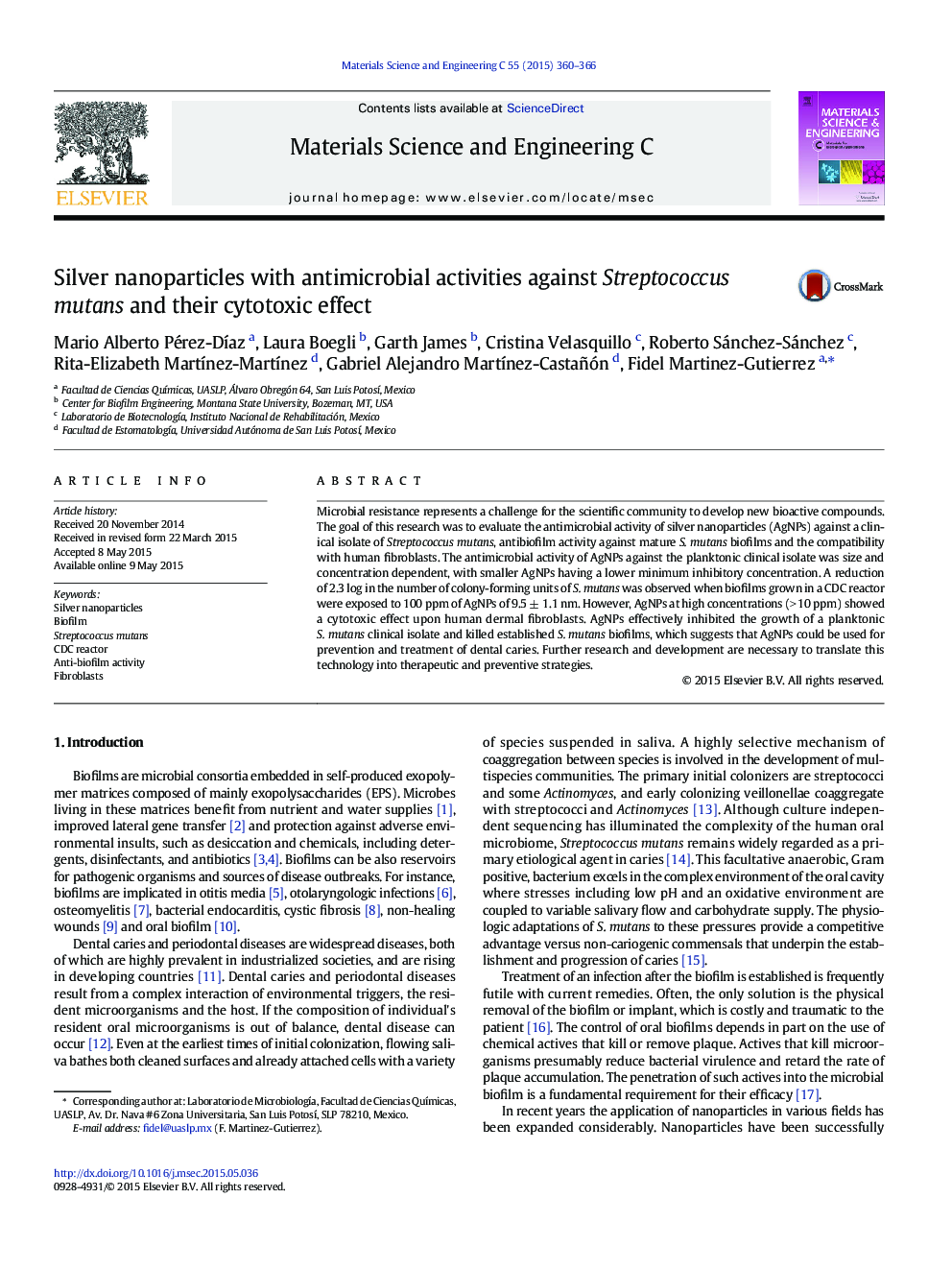| Article ID | Journal | Published Year | Pages | File Type |
|---|---|---|---|---|
| 7869329 | Materials Science and Engineering: C | 2015 | 7 Pages |
Abstract
Microbial resistance represents a challenge for the scientific community to develop new bioactive compounds. The goal of this research was to evaluate the antimicrobial activity of silver nanoparticles (AgNPs) against a clinical isolate of Streptococcus mutans, antibiofilm activity against mature S. mutans biofilms and the compatibility with human fibroblasts. The antimicrobial activity of AgNPs against the planktonic clinical isolate was size and concentration dependent, with smaller AgNPs having a lower minimum inhibitory concentration. A reduction of 2.3 log in the number of colony-forming units of S. mutans was observed when biofilms grown in a CDC reactor were exposed to 100 ppm of AgNPs of 9.5 ± 1.1 nm. However, AgNPs at high concentrations (> 10 ppm) showed a cytotoxic effect upon human dermal fibroblasts. AgNPs effectively inhibited the growth of a planktonic S. mutans clinical isolate and killed established S. mutans biofilms, which suggests that AgNPs could be used for prevention and treatment of dental caries. Further research and development are necessary to translate this technology into therapeutic and preventive strategies.
Related Topics
Physical Sciences and Engineering
Materials Science
Biomaterials
Authors
Mario Alberto Pérez-DÃaz, Laura Boegli, Garth James, Cristina Velasquillo, Roberto Sánchez-Sánchez, Rita-Elizabeth MartÃnez-MartÃnez, Gabriel Alejandro MartÃnez-Castañón, Fidel Martinez-Gutierrez,
